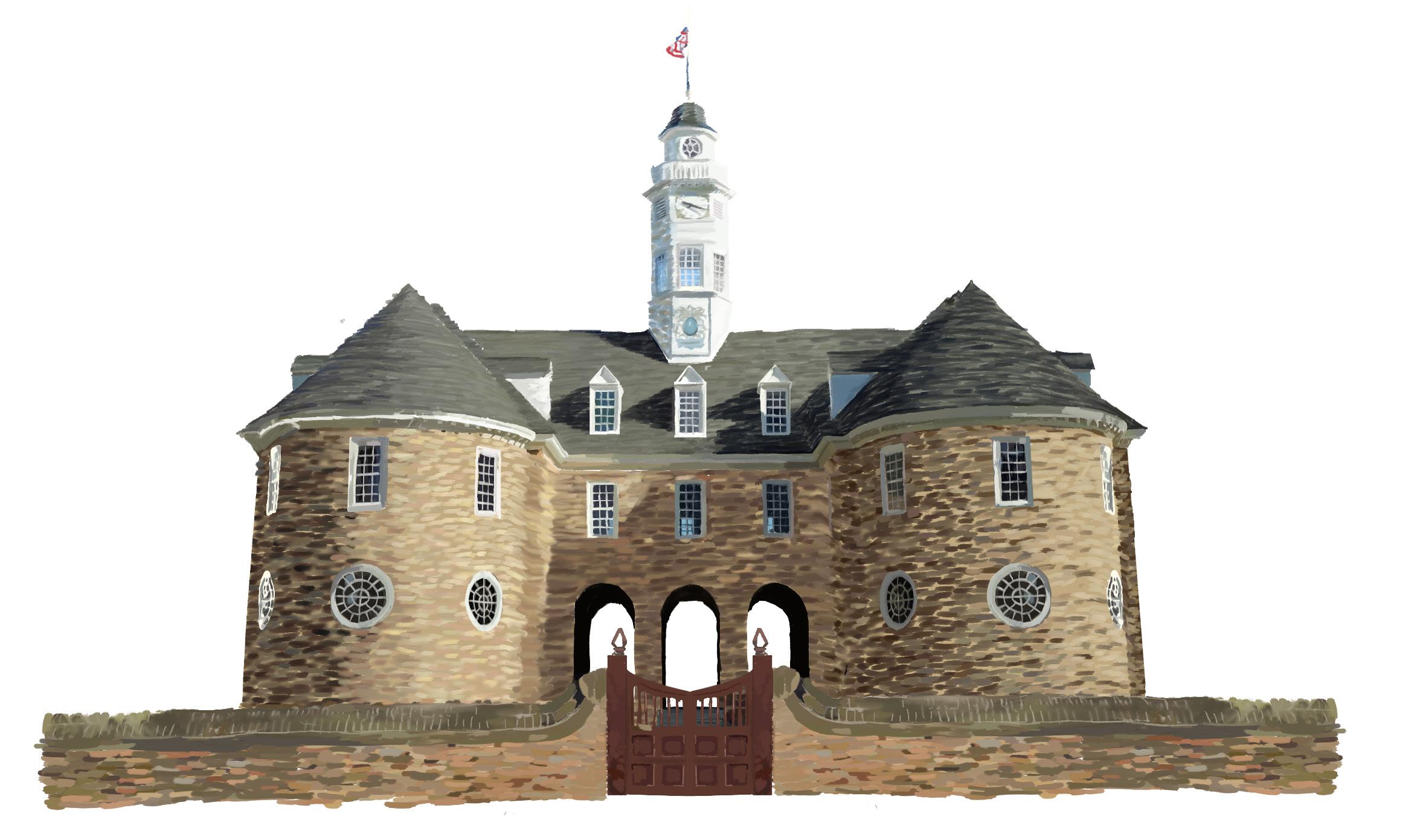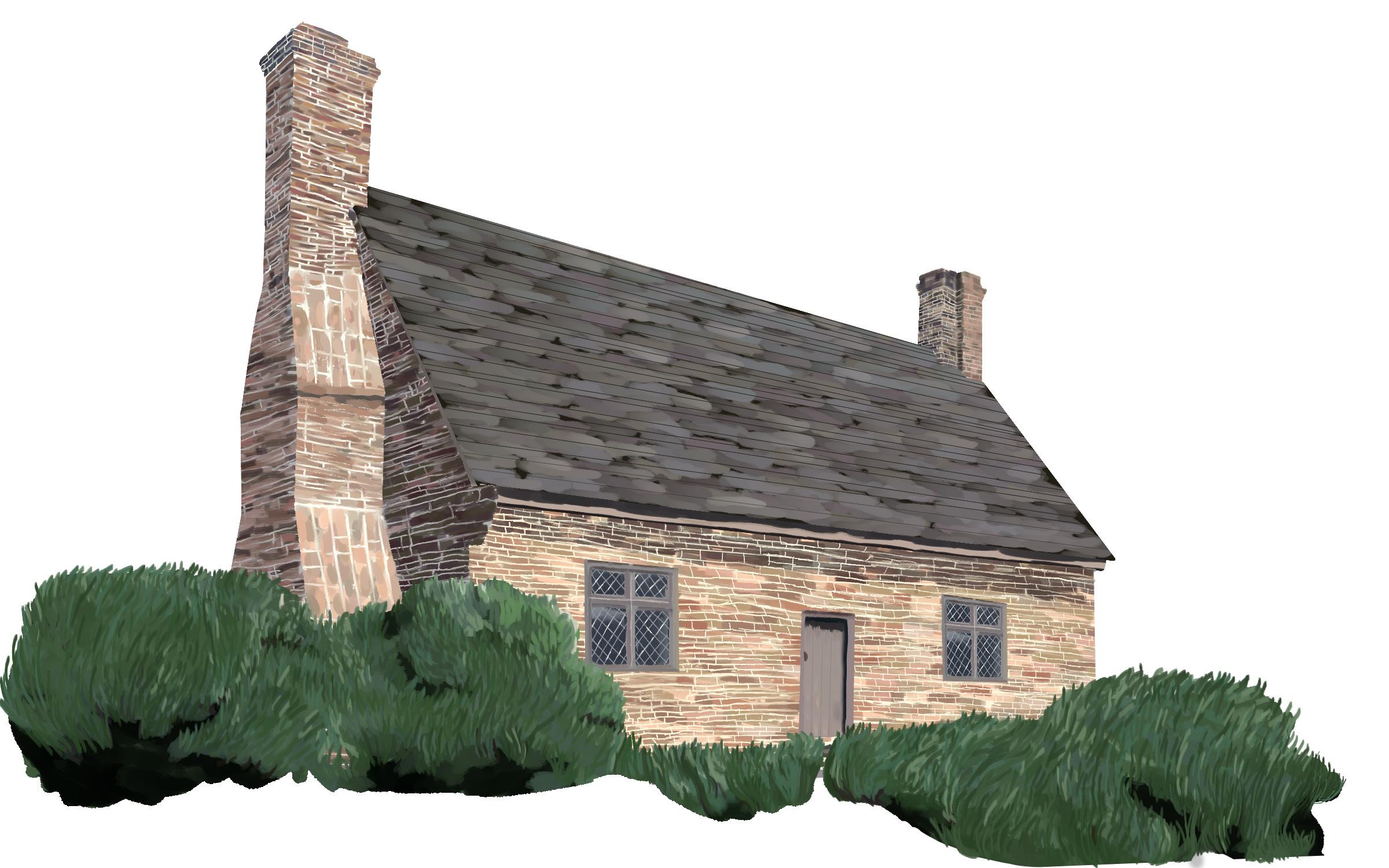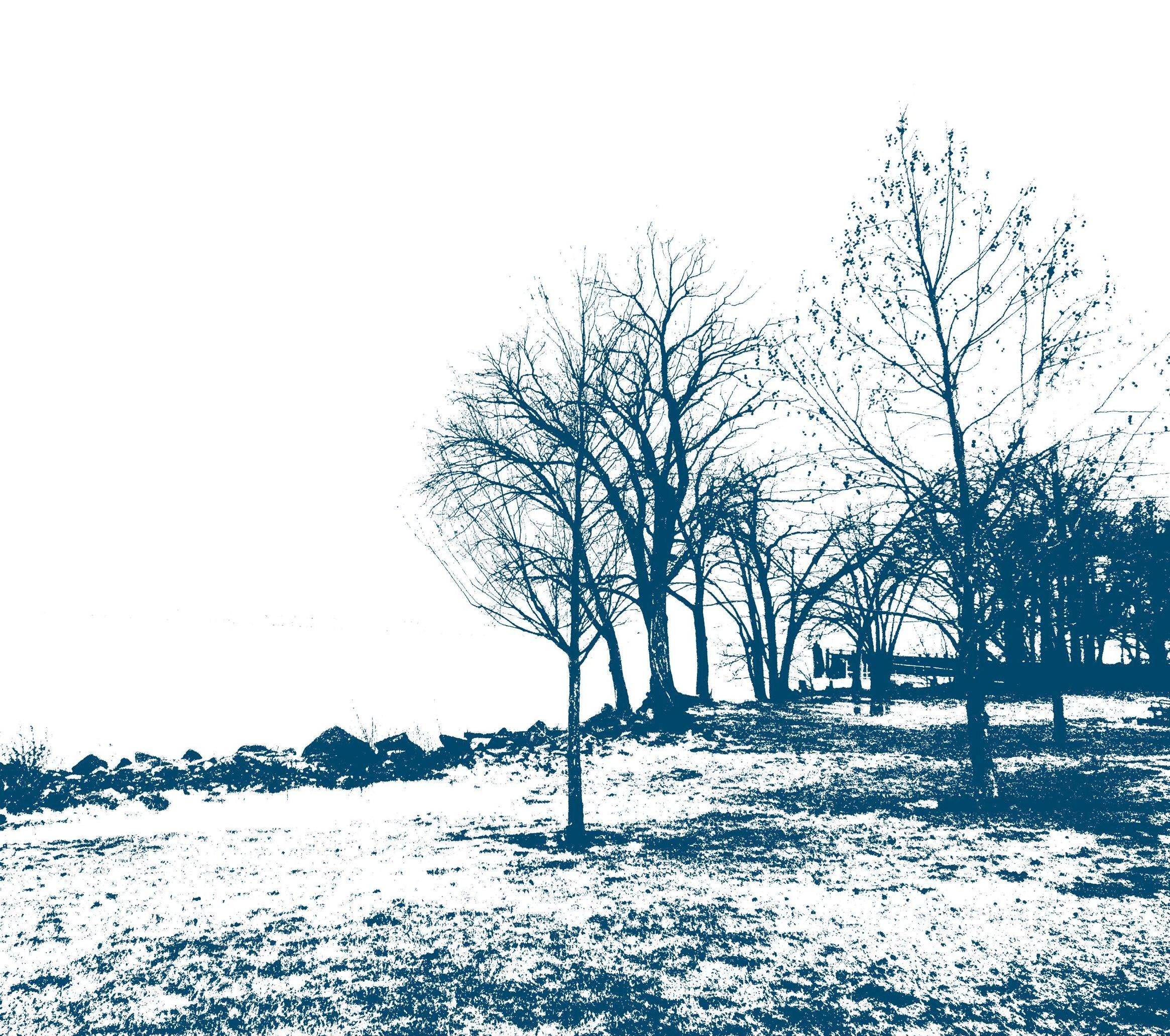
5 minute read
Colonial Era
2COLONIAL ERA
VIRGINIA HOUSE OF BURGESSES
Advertisement
In 1608, John Smith surveyed and mapped out the Potomac River and the surrounding land area. That map became the first well-known map of colonial Virginia and featured Native American settlements present in Virginia at the time. It would take around 50 years before any permanent British settlement occurred in northern Virginia. In 1654 Margret Brent, known as America’s first female lawyer, received a patent for 700-acre that included present-day Alexandria. However, Governor Berkeley granted Robert Howson, English Sailor, land that overlapped Margret Brent’s patent. Robert Howson only managed to keep the property for a month before selling it off to John Alexander. It wouldn’t be until 1696 when the first permanent settlement appeared. The Daingerfield Island saw the establishment of the first settlement by Simon Pearson. Native Americans would still inhabit the area, living alongside European settlers as the 17th century ended. The construction of Colonial Fort was approved by the Virginia House of Burgesses. The purpose of the construction was to defend the colony of Virginia from attacks by the Susquehannocks and other native tribes. Militiamen from the surrounding area guarded the fort. The colonial Virginia Governor, William Berkeley, wanted it to be a buffer, thereby making the Native Americans and English coexist conflict-free. However, many settlers at this time favored conflict against the Native Americans.

The beginning of the 18th century saw land used for tobacco cultivation. The population of the time was landowners or indentured workers on the plantations. Slavery was present at this time, the majority compromising of African origin. Tobacco was a crucial part of the local economy in what we now know as Alexandria, with its main purpose being a port city that exported tobacco. In the mid-1700s the city was
headquarters for British soldiers participating in the French and Indian War. General Edward Braddock was in charge and occupied Carlyle House, which still is present in Alexandria today. The British victory brought prestige and prosperity to Alexandria. As a result, demand increased for slave laborers as (former indentured) free white workers had money to buy properties. By the 1760s, Alexandria saw its first shipbuilding industries created, in addition to other career opportunities that didn’t include tobacco agriculture.
Participating in war costs large sums of money during and after the war ends. The British participation in the French and Indian War (The Seven Year War) caused increased taxation on the colonies that were received negatively by colonists. The Stamp Act of 1765 increased the tax price of stamps, newspapers, and documents. While the Townshend Act of 1767 increased tax on tea and goods like card games. These acts led to protests and boycotts of British goods eventually resulting in the lessening or removal of some taxes initially. Tensions didn’t stop between Britain and the American Colonies and as a result, local armed militias formed in preparation for conflict. Once the first violent conflicts had commenced in Lexington, Massachusetts on April 19, 1775, other colonists were willing to join the fight. Plenty of residents from Alexandria joined like James Craik and was handselected by George Washington as the chief physician and surgeon to the army. In 1776, the 13 colonies declared their independence from the British. The Revolutionary War continued until 1783 and was eventually won by the colonies thanks in part to aid from the French and Spanish.
The 1779 Act gave Alexandria’s rich white men the ability to elect their government. Many of the men were able to serve as a common councilman or even mayor. As the United States declared independence from the British and war continued into the 1780s, the Alexandrian economy saw prosperity thanks to wheat production that the army

STAMP ACT ITEM’S TAXED
bought. Alexandria also held prisoners of war, the majority of them being mercenaries hired by the British. As the British remained in the Potomac and conducted raids, militias protected Alexandria as there were attempts to cut vessels off from the harbor. The southern states became the final scene of the Revolutionary War. The American and French coalition in Yorktown saw the defeat of the British. The British and Americans negotiated a treaty to put an end to the war in 1783.
In the mid-1780s, Alexandria went through changes that affected the layout of the city. The city borders expanded in 1785 thanks in part to sales, as the Virginia General Assembly declared Alexandria as an international port. The demand for tobacco and wheat in Europe brought money into the city. Although later in the decade, tobacco and similar produce saw decreased production in large part to soil depletion. The 1790s saw a new age for Alexandria as the port became the most important one in the Potomac. The imports and export of goods changed the city’s appearance. The construction of new houses and industries saw the population increasing as indicated during the population participated in the first national census in 1790. The African American population grew along with the white residents. Alexandria was a hotspot for free blacks and slaves to practice trades. A lot of slaves used their skills to earn money and eventually buy their freedom. The 1790s also saw itself become part of territories donated by Virginia to establish Washington D.C. Many Alexandrians expected a bright future being part of metropolitan D.C. The city of Alexandria officially became part of the Capitol in 1801, with a charter passed by congress in 1804 making it official.
ADAM THOROUGHGOOD HOUSE
The Hall and Parlor Plan

ARCHITECTURE OF THE COLONIAL ERA
The Architecture during the beginning of the colonial Virginia era was primitive. It showed little to no interest in style. The settlers constructed timber frame houses that consists of one room. The hall and parlor plan was a popular plan that consisted of two rooms. Building with brick became more widespread as wood could become defenseless against termites. Virginia was using bricks before New England, thanks to clay being available. The 1740s would see the creation of Alexandria, the first blueprints for the town layout as well. The straightforward grids with right angles facing the riverbank were a popular layout. Georgian architecture became very popular in Alexandria in the mid-1700s.
GEORGIAN HOUSE


2
SETTLEMENT 1696 CE
The area that would eventually become Alexandria had its first permanent settlement.
1776 CE
INDEPENDENCE
1776 saw all the colonies declare independence from Britain. The US would no longer a colony but a nation.
SURVEYED
John Smith surveyed and mapped out the Potomac and native American settlement for the Virginia company. Becaming the first known colonial Virginia.
1608 CE
FOUNDED
The city of Alexandria was founded officially in 1749. The area before 1749 saw few inhabitants living there.



